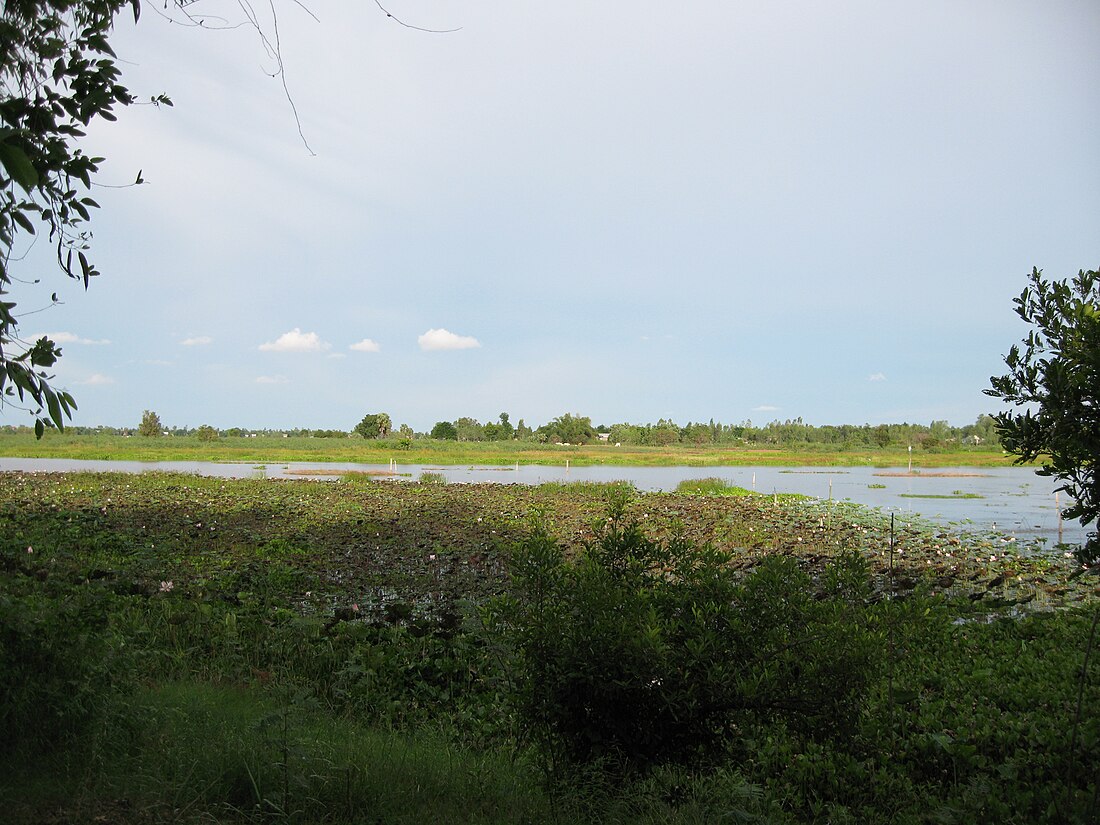Top Qs
Timeline
Chat
Perspective
Kandal province
Province of Cambodia From Wikipedia, the free encyclopedia
Remove ads
Kandal (Khmer: កណ្ដាល, Kândal [kɑnˈɗaːl]; lit. 'Middle') is a province of Cambodia which completely surrounds the Cambodian capital of Phnom Penh. Located in the country's southeast, it borders the provinces of Kampong Speu and Takéo to the west, Kampong Chhnang and Kampong Cham to the north, Prey Veng to the east, and shares an international border with Vietnam (An Giang and Đồng Tháp). It is the second most populous province in Cambodia after the capital Phnom Penh.[3] Its capital and largest city is Ta Khmau, which is approximately eight kilometres (5.0 mi) south of central Phnom Penh. Kandal is one of the wealthier provinces in the country.
This article contains weasel words: vague phrasing that often accompanies biased or unverifiable information. (August 2018) |
Remove ads
Geography
Physical
Kandal province completely surrounds the capital Phnom Penh. The province is also a part of the greater Phnom Penh Metropolitan Area with more than a million people living in and around the province. While traveling out of Phnom Penh, the boundary between the two provinces is nearly unrecognizable.
The province consists of the typical plain wet area, covering rice fields and other agricultural plantations. The average altitude of the province is no more than 10 meters above sea level. The province also features two of the biggest rivers in the country, the Bassac and Mekong Rivers.[4]
Climate
The province has a warm and humid tropical climate. The monsoon season normally begins in May and runs through October, while the rest of the year is the dry season. The warmest period of the year occurs between March and May, while the coolest period is from November through March.[5]
Remove ads
Economy
Kandal province serves as an economic belt of the capital Phnom Penh. Farming and fishing are the two main industries of the province. Major products include palm oil, peanuts, rice, and pepper. In addition to farming and fishing, the province also supports thriving cottage industries that specialize in wood carving, silk, and handicrafts.
Many garment factories are located in Kandal province, which hires more than 500,000 workers.
Remove ads
Demography
Along National Road #6 to the border with Kampong Cham, one can find the Cham Muslims community there. They are a community with a mediocre economy. Most of them are now more fluent in Khmer language, the national and majority language of Cambodia. The ethnic majority in this province is Khmer people. The Cham people historically before the Democratic Kampuchea period probably comprised 8–12% of the population of Kandal province, but now they have mixed with the majority Khmer people and embraced Theravada Buddhism, currently the population is around 4%.[6][7] Other ethnic minorities are Vietnamese Cambodians who mostly live in Kandal, Phnom Penh, and Kampong Cham, as well as Chinese Cambodians who also live around Kandal and other several provinces. The latter two ethnic groups make up about 2% of the population of Kandal province.[8]
Administrative divisions

The province is subdivided into 10 districts and 3 cities. The districts are further subdivided into 146 communes (khum) and 1087 villages.
2 districts Khsach Kandal and Lvea Aem in east Mekong river
Remove ads
Parliament
Religion
Religion in Kandal (2019 census)[9]
- Buddhism (98.3%)
- Islam (1.20%)
- Christianity (0.40%)
- Animism and Other religions (0.10%)
The state religion is Theravada Buddhism. More than 98.3% of the people in Kandal are Buddhists. Chams have been practicing Islam for hundreds of years. A small percentage follow Christianity.
Notable People
- Maya Gilliss-Chapman - CEO of Cambodians in Tech
- Ros Mey - monk
- Chea Vichea - politician
References
Wikiwand - on
Seamless Wikipedia browsing. On steroids.
Remove ads



